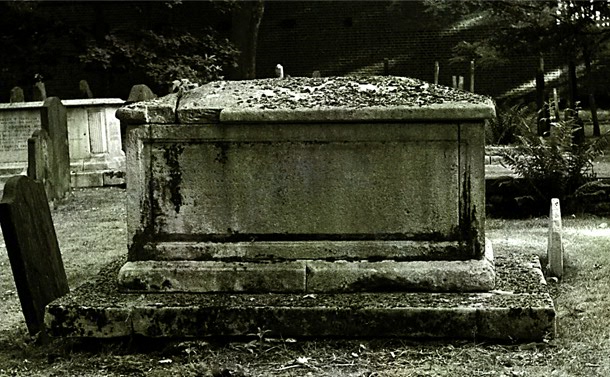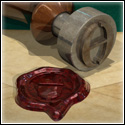
Bunhill Fields
All characters have either a historic or a mythic background, in most cases both. The starting point has been old newspaper articles and the well known descriptions of London's East End, from Charles Dickens and Gustave Doré to Jack Londons People of the Abyss. Sixty Famous Trials, edited by Richard Hudson, Daily Express: London 1938 is a collection of true-crime stories that disturbed Brittain in the eighteenth and ninetenth century. Mythology, folklore and etymology is not invented. For instance is Saint Secare's Mass thoroughly described in The Golden Bough by J. G. Frazier.
Jack the Ripper's rituals are explained through biblical, apocryphal or classical texts. One of the most important women of the new testament was Mary Magdalene, she who witnessed both the savior's death and his resurrection. Jack the Rippers first victim was named Mary Nicholls.
In catholic tradition and in the apocryphe evangelies the Virgin Mary's mother is named Anna. (See for instance Jacobus de Voragine: The Golden Legend, Readings on the Saints, from the last part of the thirteenth century, Princeton University Press: New Jersey 1993.) Jack the Rippers second victim was named Annie Chapmann.
Another of the most important women in the New Testament was Elizabeth, mother of John the Babtist. Jack the Rippers third victim was named Elizabeth Stride. (And since he was disturbed carrying out his ritual mutilations, he found another victim the same night.)
But the most important woman of the new testament was the Virgin Mary. The final victim of Jack the Ripper was named Mary Jane Kelly, and she lived with a man named Joseph Barnes. The autopsy showed that she was three months pregnant.
A large part of the plot in the book takes place at Bedlam, which was real enough. The former monastery St. Mary of Betlehem became the first insane asylum of Europe. After a while the name Bedlam became synonomous with madness. A good share of Bedlams income came from selling tickets to tourists who wanted a peek at mad men and women. It even became a well-known place for prostitutes to pick up customers.
"FBI profilers distinguish between souvenirs and 'trophies'. On one hand, it is found that the disorganized offender keps items belonging to the victim as a remembrance of the event (the murder) and perhaps as fuel for fantasies of such acts. On the other hand, an organized offender tends to keep personal items belonging to the victim as a type of trophy or prize commemorating a successful endeavor. For him, the item is much like a mounted animal head is to the big game hunter - proof of his skill. .
Even if "trophy" is only a word, not an explanation, it leads one's thoughts towards ancient rituals. "The core of the offenders ritual will never change. Unlike the MO , it remains a constant and enduring part of the offender. However, signature aspects may evolve (e.g., the lust murderer, who performs greater postmortem mutilation as he progresses from crime to crime). Elements of the original ritual may become more fully developed." Page 261 of Crime Classification Manual, red. Douglas, Burgess, Burgess & Ressler (Lexington Books: New York 1992).
The third book of Moses (Leviticus) seems like an endless list of when and how one should sacrifice. Slaughtered animals got their intestines thoroughly inspected before the sacrifice was carried to the altar and burned. This is the meaning behind the strange sentence in the Revelation 2.23: "I am he which searches the reins and hearts."
Among the most important sources is Tobit's Book, one of the deuterocanonical books. Here is an example of sacrificial magic directed against women. A large fish is gutted, and the intestines are burned to neutralize a woman's sexual powers.
Jack the Ripper brought along pieces of his victim's intestines, and at the last crime scene (Mary Jane Kelly wasly was killed indoors), the police found evidence that the murderer had lit a fire and burned something.

